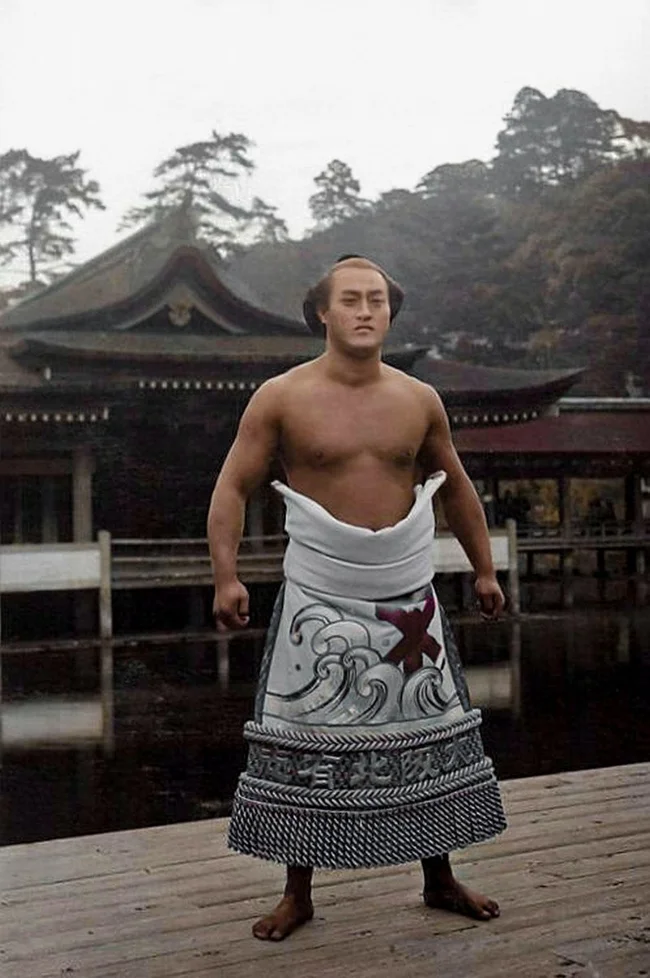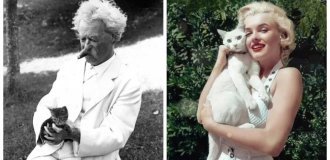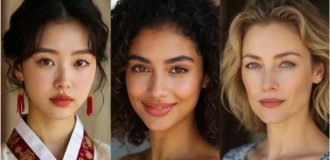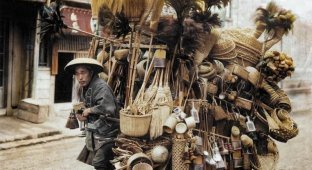Curious photos from the past of Asian countries (21 photos)
I present to you a selection of interesting photographs from Asia that convey the way of life and everyday life of people well. All the pictures were taken in the late 19th and early 20th centuries and were colored in our time. 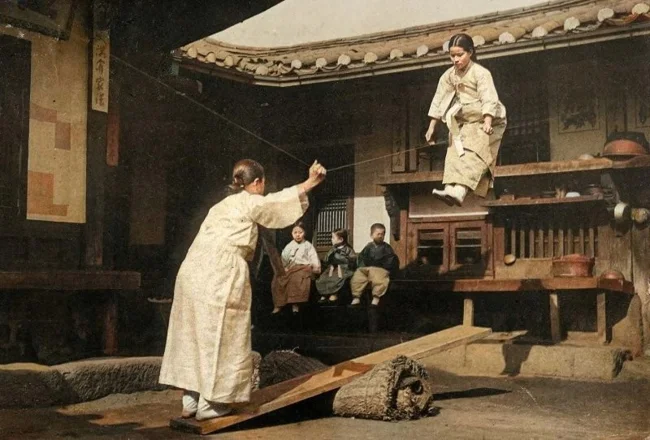
A Japanese woman carries her children in a bucket on her head, Japan, 1900s. 
The dawn of the Japanese automobile industry. A three-wheeled motor rickshaw with a girl driver Maiko-san, Japan, 1923.
A charming photo. Such gentle feminine and independently making a trip by car. "Maiko-san" is not a name or a surname, but an occupation. Maiko are geisha apprentices. 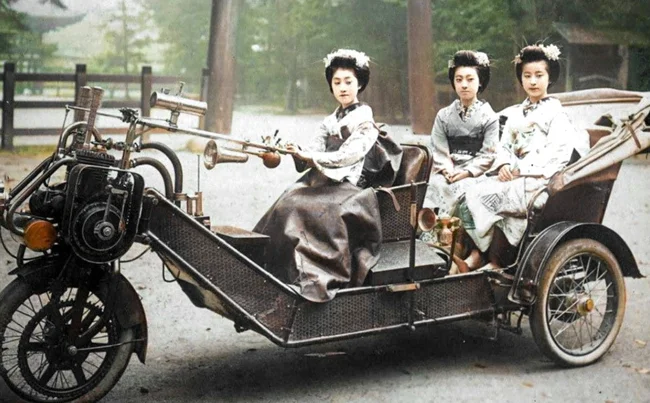
Taipei, China, 1955. 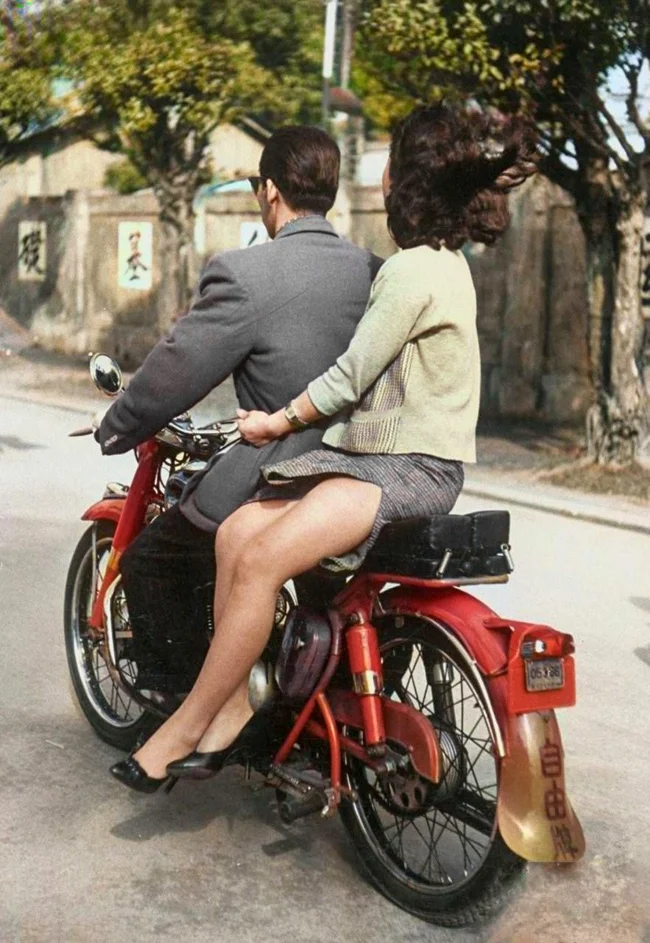
A sumo wrestler. Empire of Japan, 1907.
Sumo is a Japanese martial art in which two wrestlers compete to determine the strongest on a circular platform. Athletes are on a strict diet and train from morning to night, although they look quite bulky. 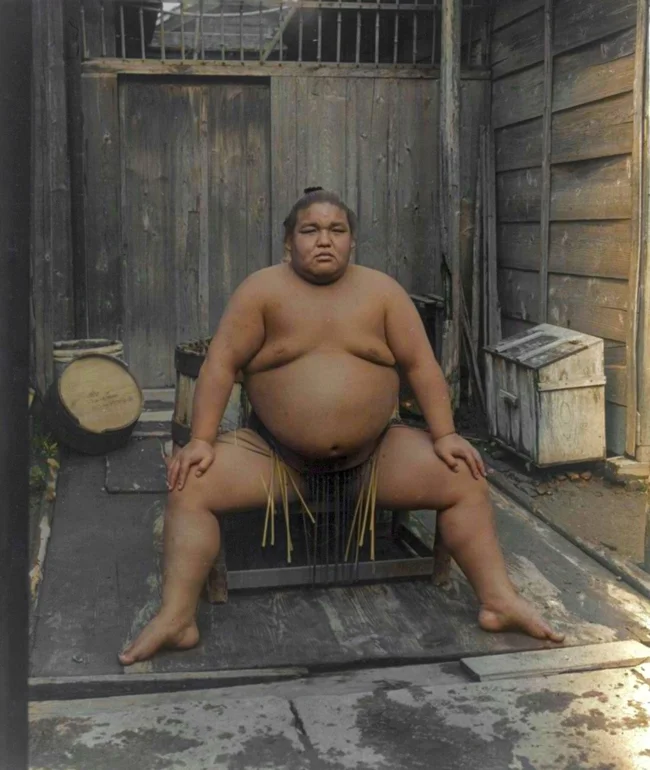
A decorated street in Tokyo, Japan, during the Tanabata festival, 1954.
Tanabata is a traditional Japanese festival, also often called the "star festival". The tradition of hanging colored papers with wishes on bamboo branches has survived to this day. This holiday came to Japan from China. 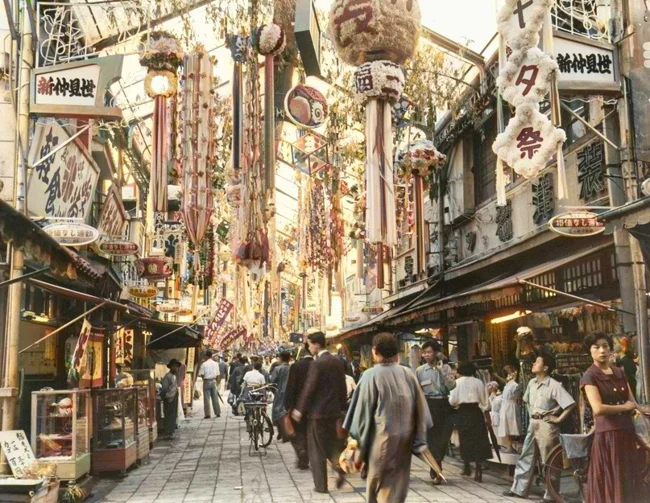
From the window of an antique shop. Beijing, 1965.
A street view in Beijing, seen from the window of an antique shop in 1965. Photographer Marc Riboud was one of the first Western photographers to take photographs in Communist China. 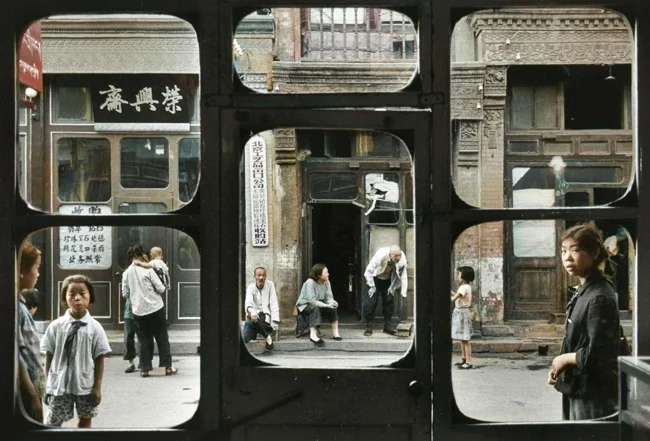
On the way to the Confucius Temple in Qufu, China, circa 1938.
Chinese help a delegation from Great Britain cross a bridge. 
Osaka, Japan, 1877–1880.
Osaka is the third most populous city in Japan, located in the southern part of the island of Honshu. 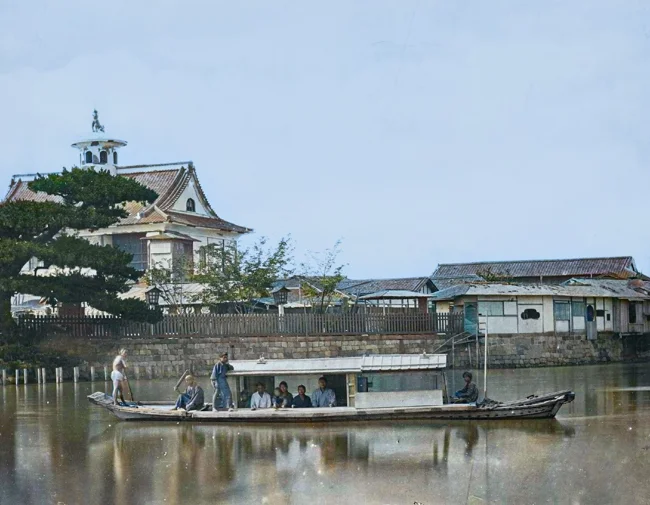
Winter Exit. Tokyo, Japan, 1895.
This portrait shows a lady appearing in the street on a snowy day, completely wrapped in a heavy cloak, which is fastened in the middle by a belt, her head and part of her face covered with a piece of crepe silk, the ends of which are tied tightly at the back of her neck, thus protecting herself from the action of the wind on any part of the body. The umbrella in her hand is an old-fashioned paper one, the ribs of which are made of split bamboo. Here it is partly open, which protects it from the wind. The clogs, which are worn on rainy or snowy days, have high heels to protect against dirt, but walking in such shoes in the snow is far from an easy and pleasant task. 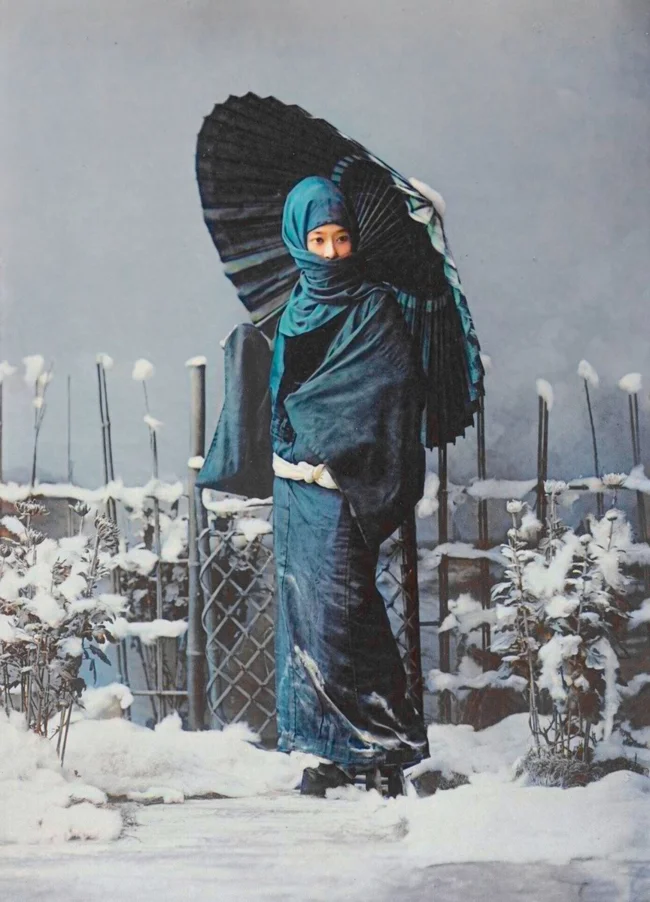
A girl sells wooden household utensils. Japan, 1898.
Baskets, brooms, shovels, scoops and much more could be bought at this convenience store. 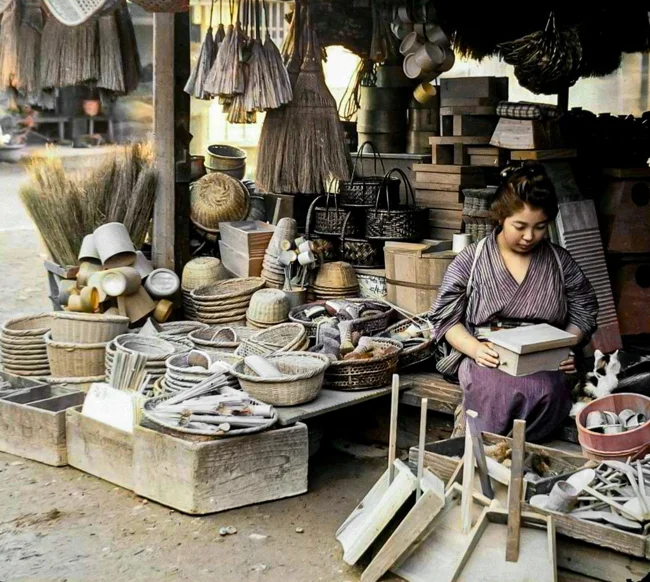
People bathing in a river in the summer heat. Japan, 1915.
The local boys apparently came to watch the Japanese girls bathe. 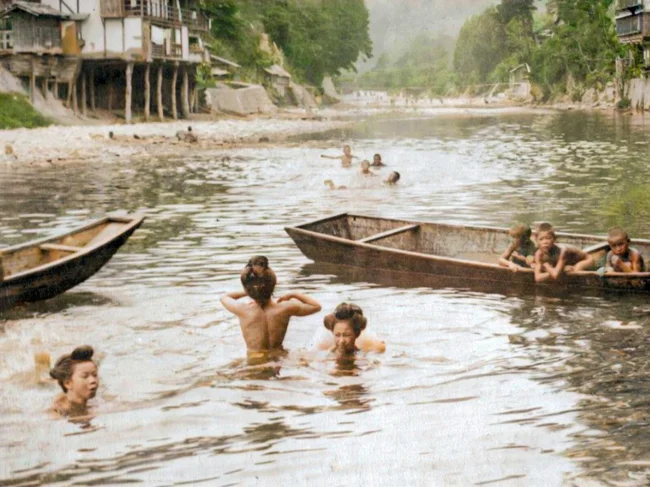
Beijing, May 1926.
The first rickshaws in China appeared in Hong Kong in the mid-19th century, and later in other large cities. This unusual form of transport came to China from Japan. 
Korea. Seoul, 1900.
At the end of the 19th century, Korea opened its doors to foreigners after hundreds of years of isolation, which had a very positive effect on the development of the country. Koreans began to cooperate with European countries and the United States, and electricity, trams, and a telegraph system appeared in the country.
In this photo, Korean women are learning the circus craft. 
Three Japanese maiko are looking at a camera. 1920s.
Another photo of a Japanese Maiko (dancing child in Japanese). Before the child labor law was passed, maiko were 9-12 years old. After completing training in the rules of receiving guests, a geisha apprentice began her career.
After the war, the rules were revised, now you can only become a maiko after finishing high school. 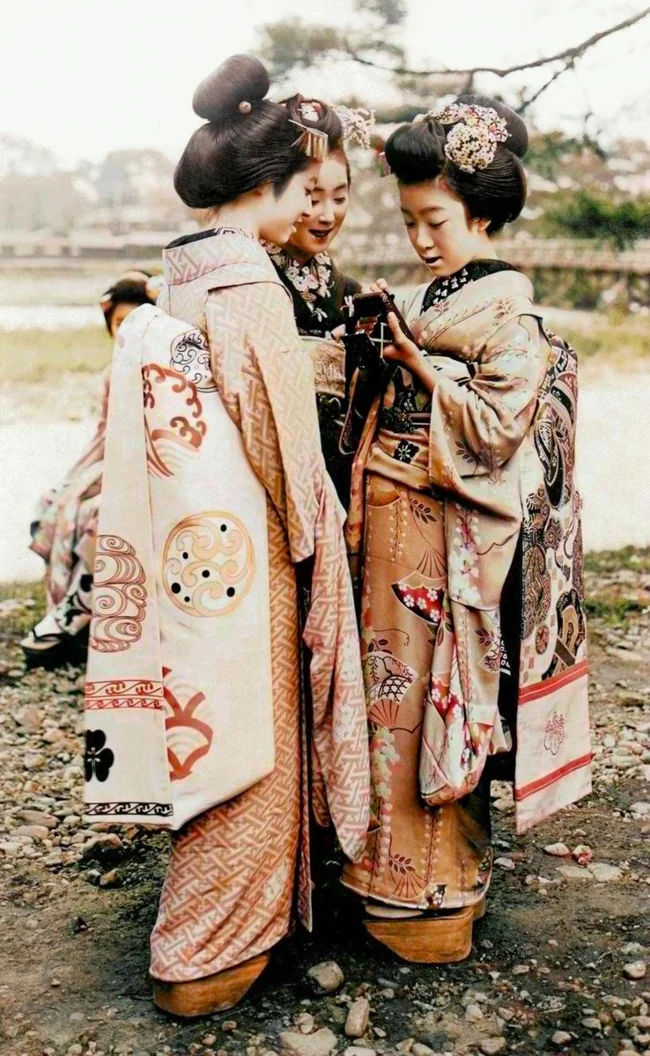
Mother and child. Hiroshima, Japan. December 1945.
Before dropping nuclear bombs on Hiroshima and Nagasaki, the United States virtually destroyed 66 other cities with incendiary bombs in an effort to cripple Japan's military capabilities.
The outcome was Japan's surrender. 
Traders. China, 1880s. 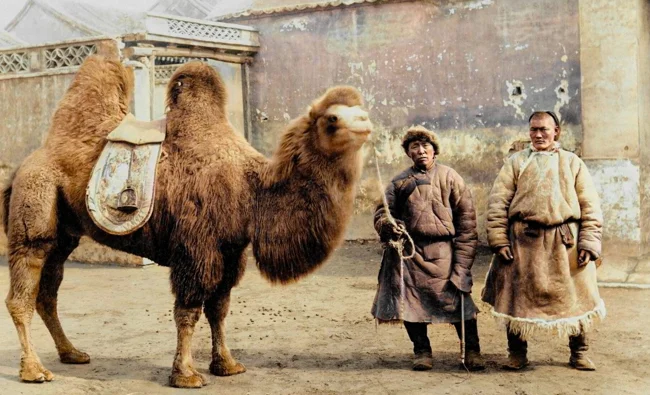
Sifting tea. China, circa 1870. 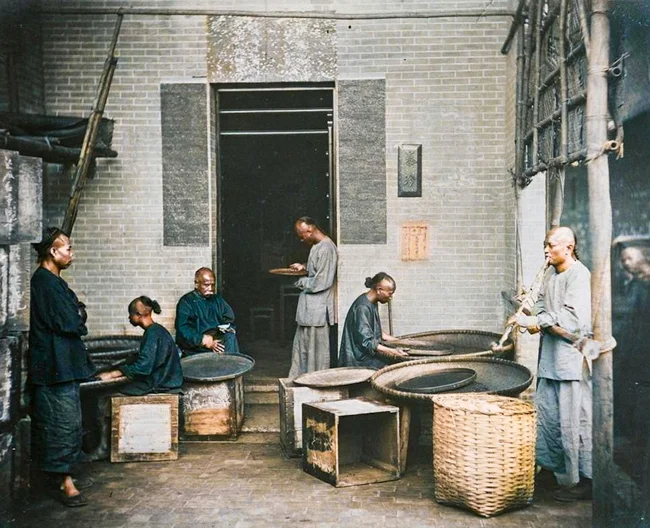
A street in Pyongyang. Korea, early 20th century.
Under Japanese colonial rule, the city's population exceeded 200,000. It was only after the Korean War (1950-1953) that Pyongyang grew into the city we know today, with wide boulevards and majestic monuments. 
Beijing, circa 1930.
A large medieval village that 100 years later became one of the most developed countries on the planet. 
Sumo wrestler, Japan, 1910. 